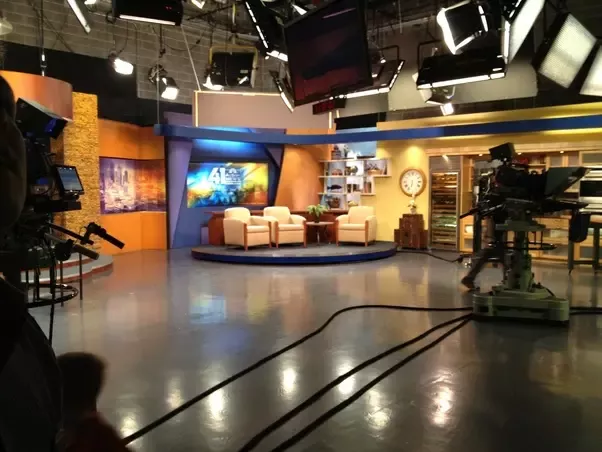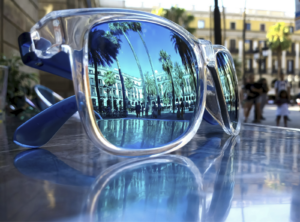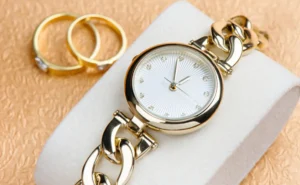
Light is the essence of everything. Only through the light can you view and perceive an object. Good lighting can significantly enhance your video productions and live television shows, and bad lighting can have as much impact. It may seem like the only vital components of any show are the presenters, but that isn’t true. While presenters are essential to the success of a presentation, the lighting in your studio can make or break any production. Here are some reasons why good quality lighting is vital on live TV shows and during the filming of any live event in general.
-
Helps Set The Mood
The proper lighting can make all of your hard work look great. Whether you’re trying to convey excitement or make something appear serious, light shows how you want it to look. On the other hand, poor lighting can ruin even your best video clips and produce a shoddy appearance. A quick tip: try using full-spectrum lighting for better results. You’ll notice an increase in color accuracy and vibrancy with full-spectrum lights.
Full-spectrum lights are often helpful as backlights behind set pieces for a television studio lighting design to add dimension and contrast to images. Many stations now require full-spectrum lighting as part of their contracts with production companies because they know it will improve quality. Setting the appropriate mood through lighting isn’t just about making things pretty; it’s about creating an atmosphere that enhances what you’re presenting. When you do it correctly, lighting can be one of your most powerful tools for producing live TV content.
-
Helps Complement Wardrobe Selection
When selecting lighting for a live show, it’s essential to consider what colors will complement your wardrobe. Using warm colors in a studio can have an unfavorable effect when you’re wearing bright colors because they will tend to fade out and wash out your clothing. Switching to cool hues can make your wardrobe pop with added vibrancy.
However, there are times when matching color schemes isn’t possible.It’s therefore essential to select fixtures that give off enough light without overpowering other elements of your stage set-up. The last thing you want is a washed-out look from using dim or dull lights!
-
Lighting Helps Define A Character
The lighting in a show allows audiences to differentiate characters from one another by adding more contrast to their facial features. As an example, let’s look at films where characters wear suits. Professionally lit shows will allow for more visibility of the character’s facial features and complexion. Viewers can easily see whether a character has brown or blue eyes or notice if they have blemishes or even freckles.
Such details are essential in creating believable relationships between actors and their roles. Also, creating characters endowed with darkness or brightness establishes a sense of familiarity for your audience. It becomes easier to recognize when certain personalities appear on screen because of how you are accustomed to seeing them previously.

-
Enhances Overall Look of Visuals
Good lighting helps enhance visual appeal, making a show or presentation look more professional. Great lighting also helps make objects and people appear as per the script—making sure they’re well-lit but not overexposed. Additionally, high-quality lighting will help ensure skin tones are natural and true to life where necessary. That is particularly important when shooting beauty tutorials or other segments requiring close-up filming of participants.
The visual quality of a live video stream directly correlates to your ability to communicate visually and verbally and keep viewers engaged. If people can’t see what you’re talking about or don’t care because they can’t make out what you look like, they’ll probably move on to something else. Enhancing your lighting can immediately improve visuals and increase viewers’ engagement.
-
Helps Make an Illusion In the Mind of the Viewer
Different lighting can help to create an illusion in a viewer’s mind. By regulating light and shadow, it can help to create a perceived emotion or feeling that wouldn’t be possible otherwise. For example, bright white lights are often used for happy moments, while more shadowy or dark areas can mean sadder moments.
That creates an emotional connection with viewers who subconsciously feel what they see on screen instead of having their emotions dictated by dialogue or action alone. Creating an illusion by controlling how a scene looks helps tell a story without even needing words. The right kind of lighting can make all of the difference in how viewers perceive something.
Conclusion
Lighting quality and direction play an essential role in helping your audience view your content from a different perspective. Proper lighting will enhance your wardrobe selection, help you hide any flaws, and make you look more appealing to viewers. So when planning for your next live television show, don’t forget to consider all of these factors before going live! However, for a professional outcome, consult with lighting experts beforehand to help you achieve your goals.




